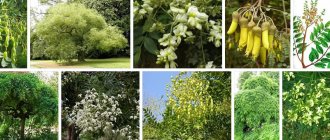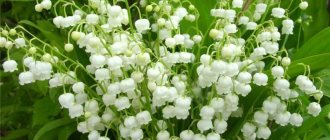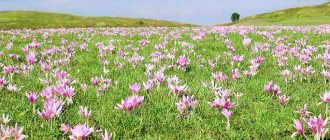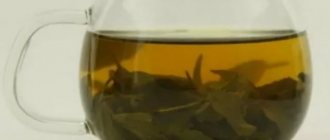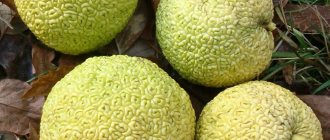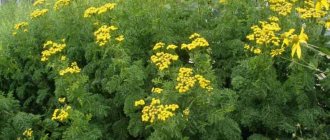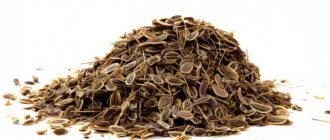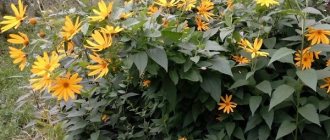Amaranth plant: brief description
Another name for the above plant is amaranth.
The word “amaranth” is translated from Latin as “unfading.” This plant received this name due to its long flowering cycle - more than two months. Amaranth has the following features:
- perennial or annual plant;
- maximum height of bushes - up to two meters;
- has red flowers;
- the inflorescence is large, spike-shaped;
- the fruit is a round capsule containing about 2000 seeds.
Today, more than 15 species of this plant are known, which grows mainly in the Caucasus.
Amaranth is a medicinal plant that is unpretentious and does not require special conditions for growth and care. It is not susceptible to frost and tolerates drought well. This plant is highly fertile: up to 10 harvests can be harvested per year.
Description of amaranth
The height reaches 2 meters, with spike-shaped or scallop-shaped flowers of red color. The fruits ripen in the form of round pods and have about 2000 seeds.
Healing and beneficial properties are inherent in the entire amaranth plant; folk healers use leaves, young stems, inflorescences and seeds for treatment and preventive measures. The popular name is shchiritsa, swimsuit, velvet. The medicinal properties of the amaranth plant are determined by its chemical composition, which amazes with a large number of vitamins and microelements. It includes:
- vitamin A, B1, B2, B6, B9, D, E, PP;
- magnesium;
- potassium;
- phosphorus;
- sodium;
- selenium;
- zinc;
- copper;
- calcium;
- sodium;
- about 15% protein.
Brief historical background about the plant
Medicinal amaranth has been cultivated for more than 8 thousand years. A photo of this plant always looks very impressive. Therefore, amaranth was used as a decorative decoration. Studying the culture of the Mayan and Aztec tribes, experts came to the conclusion: it turns out that these peoples also used this plant in the process of cooking.
The above plant was first brought to Russia at the end of the 15th century. At first it was considered a weed and was not used in cooking.
Scientists from the botanical gardens of Voronezh and Kazan State Universities contributed to the spread of this cereal crop. These specialists carefully studied this plant, held conferences and seminars on the use of amaranth in the pharmaceutical and food industries.
New facts and confirmation of old guesses
The healing herb was rediscovered by modern scientists and nutritionists. Having examined its composition, they came to the conclusion: humanity has received an invaluable gift from nature - a storehouse of essential amino acids in combination with glutamine, histidine and aspartic acid.
The beneficial medicinal properties of the amaranth plant are not only cleansing the body, improving metabolism and fighting ARVI and colds. Some substances can be used to prevent the development and treatment of diseases of the central nervous system, some are indispensable in the prevention and relief of stomach and duodenal ulcers, and normalization of blood circulation in the heart muscle.
Amaranth squalene, extracted from seeds, provides powerful protection for the skin, which makes it one of the most popular active ingredients in cosmetology - creams and other care products are created on its basis. It is a scarce product that is highly valued for its beneficial properties. It heals wounds, saturates tissues and organs with oxygen, lowers cholesterol levels in the blood, and helps reduce the size of tumors (both benign and malignant).
Chemical composition of amaranth
This cereal plant has a very useful composition. It contains:
- serotonin;
- xanthines;
- bile acids;
- steroids;
- squalene;
- choline;
- B vitamins;
- pantothenic acid;
- vitamin tocopherol acetate and D.
In alternative medicine, the entire plant is used, such as the herb amaranth. Any part of it has medicinal properties: leaves, seeds, stem.
For example, the seeds of a plant are also characterized by a fairly healing composition:
- antioxidant squalene;
- 16% protein;
- unsaturated fats (about 6%);
- vitamins E, rutin, D, group B;
- microelements phosphorus, calcium, magnesium;
- pectin;
- gluten.
Amaranth: application
This plant is used in many fields. Interestingly, even during the times of the Aztec tribe, it was used for cooking and as fuel. Nowadays, amaranth is intensively used in such areas as:
- Cooking - first and second courses, as well as drinks, are prepared from it. In addition, amaranth seeds are enriched in baked goods and added to baby food.
- Perfume – the oils of this plant are used to produce perfume.
- As a decorative element, amaranth is often planted in summer cottages, since this plant looks quite interesting.
- As animal feed. Experts say: if you introduce amaranth into the feed, the animals will grow twice as fast.
It should be noted that this plant is widely used in pharmaceuticals for the production of medicinal products. Alternative medicine also does not forget amaranth: healers recommend recipes for various tinctures and lotions from the above herb for the treatment of many diseases.
BENEFICIAL FEATURES
Amaranth is used as a food, feed, medicinal, green manure and ornamental crop. The seeds and leaves of the plant are suitable for food purposes .
The seeds are distinguished by high milling qualities . The flour is rich in vitamins and minerals and can improve the baking and nutritional qualities of wheat flour. Flour and cereals from amaranth seeds can be used as a food additive (5-20%) for the preparation of porridges, bakery, confectionery and pasta products. In Mexico, they produce vermicelli and noodles made from amaranth and wheat flour, concentrated protein tablets from amaranth, cookies, and the Quinoa superdrink made from amaranth and cocoa. Amaranth leaves contain a significant amount of protein (up to 29%), which is twice the content of this substance in wheat. The protein is balanced in essential amino acids.
Vitamins C, E, A, pigments, pectin substances, and microelements were also found in amaranth protein. This plant is superior to spinach in terms of nutrients. The Japanese compare the value of amaranth to squid meat.
It is used to prepare salads, side dishes, and sauce additives; dried leaves are added to various dishes to improve their quality. Natural red-violet food coloring is obtained from red-colored amaranth leaves.
Regular consumption of amaranth improves metabolism in the body and increases resistance to disease. In folk medicine, an aqueous infusion of the plant's herb is used for certain diseases of the gastrointestinal tract, as a hemostatic agent.
Amaranth seed oil has healing properties and is used for stomach and cardiovascular diseases, rheumatism . It is effective in treating burns.
Amaranth: medicinal properties, photo
This plant has the following beneficial properties:
- due to the high content of squalene, amaranth is a powerful remedy against malignant tumors;
- promotes rapid recovery of the body after chemotherapy;
- strengthens the immune system;
- eliminates hormonal imbalance;
- cleanses the body of waste, toxins and other diseases.
In addition, scientists claim that such a new substance as amaranthine is contained precisely in the amaranth herb. Its medicinal properties lie in the fact that it helps speed up the functioning of the human body.
The above plant is also characterized by antioxidant properties.
But these are not all the advantages that medicinal amaranth has. The seeds of the plant contain very valuable oil. This product is not cheap and is extremely useful. Amaranth oil is a powerful immunostimulating, bactericidal, anti-inflammatory and antitumor agent.
Thanks to the above product, amaranth is extremely healing. The medicinal properties of the oil of this plant include the following effects on the body:
- normalization of the functioning of the human reproductive system;
- cell regeneration and rejuvenating effect;
- improving the condition of the skin, increasing its elasticity and firmness;
- active weight loss with symptoms of obesity;
- prevention of cancer, diseases of the heart and its system;
- strengthening the immune system.
Hemostatic ability is another unique property of a plant such as amaranth. Also, thanks to vitamin P (rutin), it strengthens the walls of capillaries, makes blood vessels less permeable, and cleanses them of cholesterol.
How to properly prepare raw materials
The collection takes place in the last summer months, when the flowering period ends, since this natural product must be allowed to ripen. However, there are varieties that can be prepared in winter. Here are a few ways to preserve the beneficial properties of this amazing herb:
- Amaranth grains must be removed from the panicles, after which all parts are used - flowers and stems can be frozen, dried or fermented.
- Drying is carried out as follows: the plant is cut into large pieces, laid out in one layer on paper and placed in a cool and dark place. The raw materials are mixed from time to time.
- The second option is that the leaves are collected from the stem, bundles (bundles) are formed from them, which are hung and dried. Once the herb begins to crumble when rubbed, it can be removed and used as a natural cure for a variety of ailments or added to food.
- Another possible storage method is freezing. In this case, amaranth bouquets, washed and dried, are placed in bags and sent to the freezer. The shelf life of such preparations is no more than a year.
- The last method we will talk about is pickling. The first option involves making a brine with the addition of salt and sugar, the second is extremely simple - you just need to sprinkle the leaves collected in a bunch with salt and place them in a container.
The best way to start getting acquainted with amaranth is to try products made from this valuable raw material. There are a great variety of them - a variety of breakfasts, breads, bran, gluten-free pasta, and other sweets that will not add new kilograms, but will make your figure slim and beautiful. It is better to start the transition to proper nutrition by including foods that do not contain sugar and are rich in vitamins, minerals, and amino acids.
In this article we talked about the amaranth plant, its use in treatment and consumption, attaching a photo of the cereal crop, which remains one of the most useful and valuable. Eat right - choose foods that will become a good basis for a healthy and balanced diet, will help cleanse your body of waste and toxins and improve your health.
Author: Di&Di Corporation
Indications for use of the plant
Experts recommend using amaranth for symptoms of the following diseases:
- oncology;
- atherosclerosis;
- adenoma;
- haemorrhoids;
- vitamin deficiency (especially vitamin P deficiency);
- obesity;
- hypertension;
- radiation injuries;
- skin diseases (eczema, diathesis, rash, allergies);
- colds, flu;
- problems with the heart and its system;
- nervous system disorders;
- hormonal imbalance;
- hepatitis;
- female diseases (erosion, ovarian cysts, colpitis, inflammation of the appendages, endometriosis).
Traditional medicine and amaranth
Healers actively use infusions, lotions and baths based on the above plant to treat multiple diseases. For this, in most cases, dry amaranth is used. The medicinal properties (recipes for folk remedies from the plant reveal them well, unlike drugs in official medicine) contribute to a positive result already in the first week of such therapy.
An infusion of amaranth is prepared as follows: 15 g of a mixture of dry raw materials (stem, inflorescence, roots, plant seeds) is poured with a glass of boiling water, and then kept over low heat or a water bath for about 15 minutes. Since the taste of this medicine is somewhat astringent and sweetish, traditional medicine experts advise adding lemon juice or a spoonful of honey to this infusion. Healers advise using this remedy, 50 ml daily for a half-month. After taking this medicine, you are allowed to eat after 15-20 minutes.
An amaranth bath for treating skin diseases is prepared as follows: approximately 350 g of dry plant is steamed with two liters of boiling water. Let it brew, and then pour this product into the bath, adding a little water. This procedure should be carried out for 20 minutes a day.
A remedy based on amaranth for gastritis and liver pain is prepared as follows: the juice of the fresh plant is mixed with cream in a 1:1 ratio. After meals, you should take a tablespoon of this medicine, but no more than three times a day.
An infusion of fresh leaves of the plant perfectly relieves stomach pain. To do this, pour a tablespoon of amaranth into a cup of boiling water and leave for up to 40 minutes. Mix a quarter glass of this infusion with a dessert spoon of honey and take 3 times a day.
Use in folk medicine
In folk medicine, decoctions and infusions are made based on amaranth, juice is squeezed out and solutions are prepared for bathing.
An infusion of amaranth herb is prepared as follows: one tablespoon of crushed raw material is poured into a glass of warm water and heated in a water bath for 15 minutes. When the initial volume decreases, add boiling water.
The recommended oral dose is two large sips half an hour before meals for two weeks.
To eliminate inflammatory processes in the oral cavity, the infusion is used as a rinse. Problems with women's health are eliminated using tampons with infusion.
For lung diseases, take a teaspoon of amaranth juice mixed with honey.
To treat skin diseases, take baths. To do this, pour three hundred grams of raw material into two liters of warm water, bring to a boil and leave for 15 minutes. Then pour it into bath water. It is recommended to do such baths three times a week, lasting 30 minutes.
Traditional healers recommend using amaranth as an internal and external remedy for enuresis and inflammation of the urinary system, inflammatory processes in the oral cavity, jaundice, dysentery, respiratory diseases, heavy menstruation and intestinal diseases, insomnia, cataracts, insufficient breast milk, pain in the lower back, as well as for rejuvenating the body.
Amaranth: medicinal properties, recipes for dishes in which they appear
Alternative medicine for good health and prevention of cardiovascular and cancer diseases advises eating food enriched with the above plant.
The Japanese, for example, always include this herb in their diet and compare its nutritional value with squid (greens) and milk (grains). Chinese medicine actively uses amaranth against aging. The medicinal properties (food recipes help to maximize their manifestation) are well revealed when using not just preparations based on the plant, but precisely when it is used in cooking.
For example, you can make porridge from amaranth. It is prepared from the seeds of the plant, a glass of which is boiled in three glasses of water for about 45 minutes, while mixing them thoroughly. You can add fruits or nuts to the finished porridge if desired.
It should be noted that amaranth seeds ground into flour are often used in baking bread. They perfectly enrich this product and give it a special taste.
How to prepare amaranth?
This plant is harvested only at the end of summer. After all, only then does the flowering period of amaranth completely end and it ripens. But there are varieties that need to be harvested in winter.
This process occurs manually at home and with the help of a combine harvester if the plant is harvested on an industrial scale.
Amaranth stems and flowers can be stewed, fermented or frozen.
It should be noted that the plant does not lose its properties in the freezer and can be stored for more than one year.
Contraindications to the use of the plant
Alternative medicine does not recommend consuming amaranth for people with the following diseases:
- severe form of diseases of the digestive system;
- urolithiasis disease;
- individual intolerance to this substance.
In addition, it is allowed to give amaranth to children. Manufacturers add this plant, whose medicinal properties work very well for this category of patients, to baby food products.
Patients suffering from pancreatitis and cholecystitis should seek advice from an experienced specialist about this before consuming amaranth.
Amaranth is a unique plant that copes well with particularly serious illnesses, especially cancer. But before you begin treatment with agaric, you should definitely discuss this issue with your doctor.



